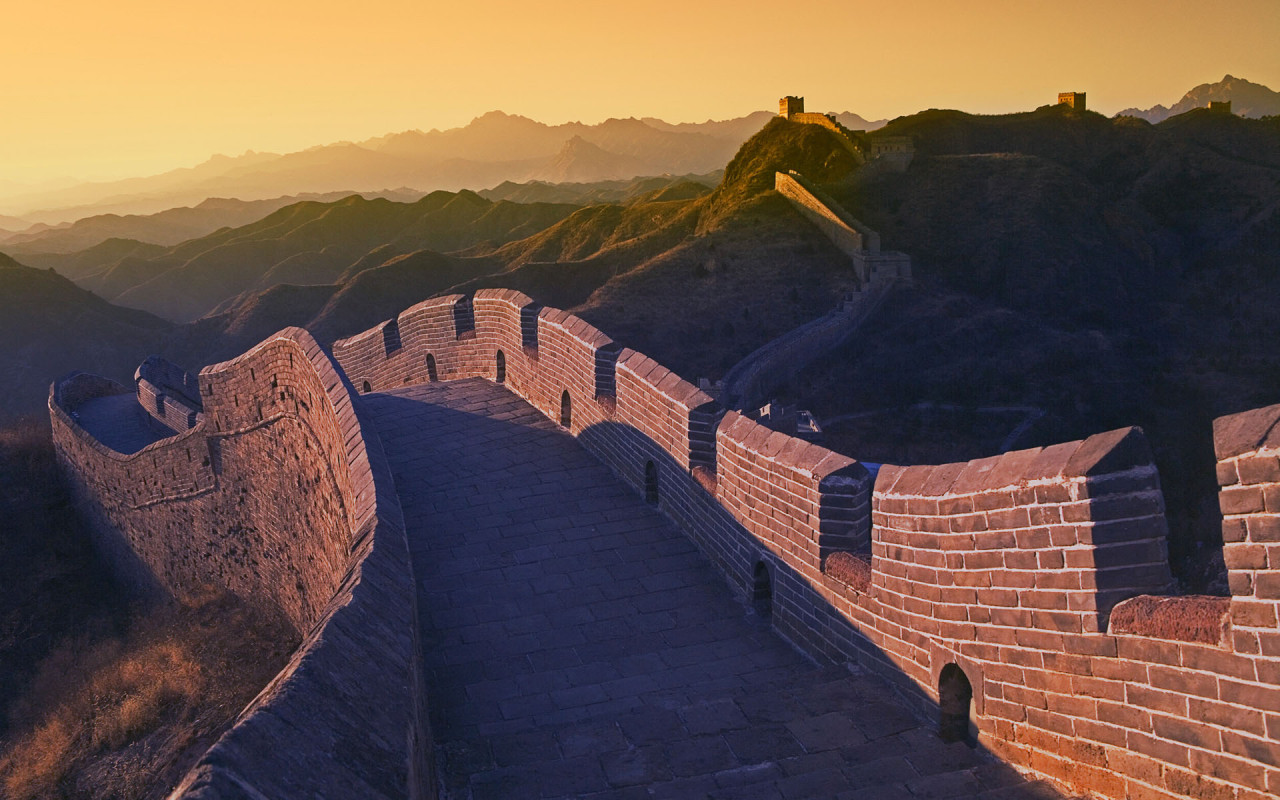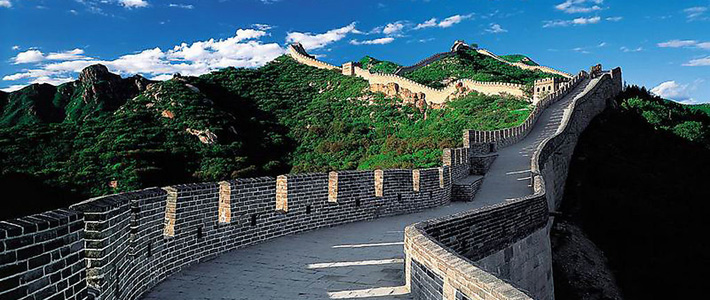The Great Wall of China, one of
the greatest wonders of the world, was listed as a World Heritage by UNESCO in
1987. Just like a gigantic dragon, the Great Wall winds up and down across
deserts, grasslands, mountains and plateaus, stretching approximately 8,851.8
kilometers (5,500 miles) from east to west of China.
With a history of more
than 2000 years, some of the sections are now in ruins or have disappeared.
However, it is still one of the most appealing attractions all around the world
owing to its architectural grandeur and historical significance.
1. Chinese
Name: 长城/万里长城
2. Chinese
Pinyin : Cháng Chéng/Wàn Lǐ Cháng Chéng
3. English
Translation : Great Wall/Great Wall of
10,000 Li
4. Length : 8,851.8 km (5,500 miles)
5. Builder: the
ancient Chinese laboring people (common people, farmers, soldiers and slaves)
6. Construction
Period : About 2,000 years from the Warring States Period (476 BC - 221 BC) to Ming Dynasty (1368-1644)
Enjoying the fame of "Wan Li
Chang Cheng", China Great Wall starts from Hushan in Liaoning in the east
and ends at Jiayuguan Pass in Gansu in the west, via the nine provinces or
cities in northern China, including Liaoning, Hebei, Beijing, Tianjin, Shanxi,
Shaanxi, Inner Mongolia, Ningxia and Gansu. It is often compared to a huge
dragon winding up and down in the mountains, grassland and deserts. In Chinese
history, over 20 states and dynasties have built the Great Wall, and the
sections built in Qin (221 BC-206 BC), Han (206BC-220) and Ming (1368-1644)
dynasties exceed 10,000 Li (about 3,107 miles). The new survey of the length of
the Great Wall in Ming Dynasty has confirmed that it is 8,851.8 km (5,500 miles) long.
The Great Wall of China is not a continuous wall but is a
collection of short walls that often follow the crest of hills on the southern
edge of the Mongolian plain. The
Great Wall of China, known as "longWall of 10,000 Li" in China, extends about 8,850 kilometers (5,500
miles).
A first set
of walls, designed to keep Mongol nomads
out of China, were built of earth and stones in wood frames during the Qin
Dynasty (221-206 BCE).
Some
additions and modifications were made to these simple walls over the next
millennium but the major construction of the "modern" walls began in
the Ming Dynasty (1388-1644 CE).

The Ming
fortifications were established in new areas from the Qin walls. They were up
to 25 feet (7.6 meters) high, 15 to 30 feet (4.6 to 9.1 meters) wide at the
base, and from 9 to 12 feet (2.7 to 3.7 meters) wide at the top (wide enough
for marching troops or wagons). At regular intervals, guard stations and watch
towers were established.

Since the
Great Wall was discontinuous, Mongol invaders had no trouble breaching the wall
by going around it, so the wall proved unsuccessful and was eventually
abandoned. Additionally, a policy of mollification during the subsequent Ch'ing
Dynasty that sought to pacify the Mongol leaders through religious conversion
also helped to limit the need for the wall.

Through
Western contact with China from the 17th through 20th centuries, the legend of
the Great Wall of China grew along with tourism to the wall. Restoration and
rebuilding took place in the 20th century and in 1987 the Great Wall of China
was made a World Heritage Site. Today, a portion of the Great Wall of China
about 50 miles (80 km) from Beijing receives thousands of tourists each day.




